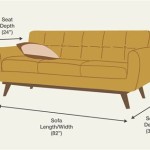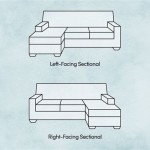SOFA Criteria for Sepsis: A Comprehensive Overview
Sepsis is a life-threatening condition that arises when the body's response to an infection spirals out of control, causing damage to its own tissues and organs. Early recognition and timely intervention are crucial for improving patient outcomes. The Sequential Organ Failure Assessment (SOFA) score, and its simplified version, the quick SOFA (qSOFA), are tools used to assess organ dysfunction and identify patients at risk of sepsis.
The SOFA score was initially developed to describe and quantify the degree of organ dysfunction in critically ill patients. The Sepsis-3 definition, published in 2016, incorporated the SOFA score as a key component in diagnosing sepsis. The guidelines define sepsis as life-threatening organ dysfunction caused by a dysregulated host response to infection. Organ dysfunction is represented by an increase of 2 points or more in the SOFA score from baseline.
The SOFA score evaluates six organ systems: respiration, coagulation, liver, cardiovascular, central nervous system, and renal. Each system is assigned a score from 0 to 4, based on specific clinical and laboratory parameters. A higher score indicates more severe organ dysfunction. The original SOFA score requires extensive physiological monitoring and laboratory data, which may not be readily available in all clinical settings. This led to the development of qSOFA as a simplified screening tool.
The qSOFA score consists of three criteria: altered mental status (Glasgow Coma Scale score <15), systolic blood pressure ≤100 mmHg, and respiratory rate ≥22 breaths per minute. The presence of two or more of these criteria suggests a higher risk of poor outcomes due to sepsis. While qSOFA is easier to use, it is primarily intended as a screening tool and should not replace the comprehensive SOFA score for diagnostic purposes in critical care settings.
Understanding the Components of the SOFA Score
The SOFA score is based on specific clinical and laboratory parameters that reflect the function of various organ systems. These parameters are crucial for accurately assessing the severity of organ dysfunction and calculating the overall SOFA score. Each component of the SOFA score contributes to the overall assessment and plays a critical role in identifying patients with sepsis.
Respiratory System: The respiratory component of the SOFA score assesses the level of respiratory support required to maintain adequate oxygenation. This is typically evaluated using the PaO2/FiO2 ratio. PaO2 represents the partial pressure of oxygen in arterial blood, while FiO2 represents the fraction of inspired oxygen. A lower PaO2/FiO2 ratio indicates more severe respiratory dysfunction. A score of 0 is assigned when PaO2/FiO2 is ≥400 mmHg. As the ratio decreases, the score increases, with a score of 4 assigned when PaO2/FiO2 is ≤100 mmHg and the patient requires mechanical ventilation.
Coagulation System: The coagulation component assesses the function of the clotting system by measuring the platelet count. A low platelet count indicates impaired coagulation and an increased risk of bleeding. A score of 0 is assigned when the platelet count is ≥150,000/μL. As the platelet count decreases, the score increases, with a score of 4 assigned when the platelet count is <20,000/μL.
Liver System: The liver component assesses liver function by measuring bilirubin levels. Bilirubin is a yellow pigment produced during the breakdown of red blood cells. Elevated bilirubin levels indicate impaired liver function and an inability to process bilirubin effectively. A score of 0 is assigned when the bilirubin level is <1.2 mg/dL. As the bilirubin level increases, the score increases, with a score of 4 assigned when the bilirubin level is >12 mg/dL.
Cardiovascular System: The cardiovascular component assesses the function of the circulatory system by measuring mean arterial pressure (MAP) and the need for vasopressors. MAP represents the average arterial pressure during a single cardiac cycle. A lower MAP indicates inadequate tissue perfusion. Vasopressors are medications used to increase blood pressure. A score of 0 is assigned when MAP is ≥70 mmHg without vasopressor support. As MAP decreases and/or vasopressor support is required, the score increases. A score of 4 is assigned when MAP is <70 mmHg despite vasopressor support or if vasopressors are required at a high dose (e.g., norepinephrine >0.1 mcg/kg/min).
Central Nervous System: The central nervous system component assesses neurological function using the Glasgow Coma Scale (GCS). The GCS evaluates three aspects of neurological function: eye opening, verbal response, and motor response. The GCS score ranges from 3 to 15, with a lower score indicating more severe neurological impairment. A score of 0 is assigned when the GCS score is 15 (fully alert and oriented). As the GCS score decreases, the score increases, with a score of 4 assigned when the GCS score is <6.
Renal System: The renal component assesses kidney function by measuring creatinine levels or urine output. Creatinine is a waste product produced by muscle metabolism. Elevated creatinine levels indicate impaired kidney function and an inability to filter creatinine effectively. Urine output reflects the kidney's ability to produce urine. A score of 0 is assigned when creatinine is <1.2 mg/dL or urine output is >500 mL/day. As creatinine levels increase and/or urine output decreases, the score increases. A score of 4 is assigned when creatinine is >5 mg/dL or urine output is <200 mL/day.
Limitations of SOFA and qSOFA
While SOFA and qSOFA are valuable tools for assessing organ dysfunction and identifying patients at risk of sepsis, they have certain limitations that clinicians should be aware of. It is essential to interpret these scores in the context of the patient's overall clinical presentation and other relevant factors. Over-reliance on a single score can lead to misdiagnosis or delayed treatment.
One limitation of the SOFA score is that it requires extensive physiological monitoring and laboratory data, which may not be readily available in all clinical settings, especially in resource-limited environments. The need for frequent laboratory tests can also contribute to increased costs and workload for healthcare providers. This can be a barrier to its widespread use in settings where access to these resources is limited.
The qSOFA score, while simpler and easier to use, is less sensitive than the SOFA score, meaning it may miss some cases of sepsis. It is primarily intended as a screening tool and should not replace the comprehensive SOFA score for diagnostic purposes in critical care settings. Relying solely on qSOFA may lead to delayed diagnosis and treatment in some patients.
Neither SOFA nor qSOFA are diagnostic for infection. They assess organ dysfunction, which could be caused by multiple etiologies. Infection must be suspected as the underlying cause, and appropriate investigations should be performed. Other conditions, such as trauma, pancreatitis, or drug overdose, can also cause organ dysfunction and increase SOFA scores, even in the absence of infection.
The baseline SOFA score may be unknown in many patients, especially those who are not previously critically ill. Calculating the change in SOFA score from baseline can be challenging in these cases, as clinicians may have to estimate the patient's pre-existing organ function. This can introduce subjectivity and potential inaccuracies in the assessment.
The variables used in SOFA and qSOFA may be influenced by other medical conditions or treatments. For example, patients with chronic kidney disease may have elevated creatinine levels even in the absence of sepsis. Similarly, patients receiving diuretics may have decreased urine output. These factors can confound the interpretation of the scores and make it difficult to accurately assess organ dysfunction due to sepsis.
The prognostic accuracy of SOFA and qSOFA may vary depending on the patient population and the specific clinical setting. Some studies have shown that these scores are less accurate in predicting outcomes in certain subgroups of patients, such as those with specific comorbidities or those receiving certain treatments. Therefore, it is important to interpret these scores in the context of the patient's individual characteristics and the specific clinical situation.
Clinical Applications of SOFA and qSOFA
Despite their limitations, SOFA and qSOFA are valuable tools in clinical practice for identifying patients at risk of sepsis and guiding management decisions. They can be used in a variety of settings, from the emergency department to the intensive care unit. Appropriate utilization can lead to earlier recognition and treatment of sepsis, ultimately improving patient outcomes.
In the emergency department, qSOFA can be used as a rapid screening tool to identify patients with suspected infection who are at higher risk of poor outcomes. Patients with two or more qSOFA criteria should be further evaluated for sepsis and managed accordingly. This can help prioritize resources and ensure that high-risk patients receive timely attention.
In the intensive care unit, the SOFA score can be used to monitor the degree of organ dysfunction over time and assess the response to treatment. Changes in the SOFA score can provide valuable information about the patient's clinical course and guide decisions about escalating or de-escalating therapy. This allows for a more dynamic and personalized approach to patient management.
The SOFA score can also be used to stratify patients into different risk categories for research purposes. This allows researchers to study the effectiveness of different interventions in specific subgroups of patients. This can lead to the development of more targeted and effective therapies for sepsis.
Both SOFA and qSOFA can be used to facilitate communication among healthcare providers. By providing a standardized way to assess organ dysfunction, these scores can help ensure that all members of the healthcare team are on the same page regarding the patient's condition and plan of care. This can improve coordination and reduce the risk of errors.
Furthermore, SOFA scores can aid in resource allocation during outbreaks or pandemics. By identifying patients with severe organ dysfunction, healthcare systems can prioritize access to limited resources, such as ventilators and intensive care beds. This can help ensure that the most critically ill patients receive the care they need.
In conclusion, the SOFA score and its simplified version, qSOFA, are valuable tools for assessing organ dysfunction and identifying patients at risk of sepsis. While they have certain limitations, they can be used effectively in a variety of clinical settings to improve patient outcomes. Clinicians should be aware of the strengths and weaknesses of these tools and interpret them in the context of the patient's overall clinical presentation and other relevant factors.

Sepsis And Septic Shock The Sofa Score Qsofa Treatments

Air Care Series Sepsis Update Taming The Sru

Sepsis 3 0 Rebel Em Emergency Medicine Blog

Pulmcrit Top Ten Problems With The New Sepsis Definition

Sofa Score Wikipedia

Sepsis Related Organ Failure Assessment Sofa Score To Help Diagnose Table

New Sepsis Definitions Crit Cloud

Podcast 22 Sepsis Sofa The Emergency Medical Minute

Sofa Score An Overview Sciencedirect Topics

Modified Cardiovascular Sofa Score In Sepsis Development And Internal External Validation Bmc Medicine Full Text








